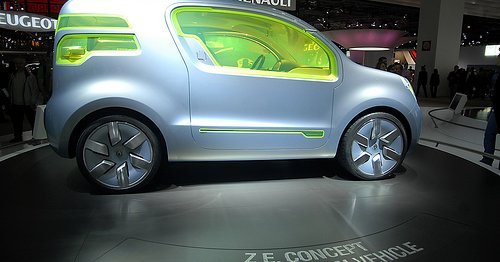The strategy concerning clean vehicles is noted more widely in the dynamics of the overhaul of the productive industrial European system. The Vice President of the commission wishes, besides passing short-term measures for real mid-term dynamics, an agreement which is very forward looking. Is this all just a show though, or is it real progress?
The Three Major Objectives of the Strategy
In the communiqué of the European Commission, three big objectives have stood out. Certain European States have already agreed to promote their clean vehicles, among which includes France, Germany, Denmark, Portugal and Spain once again. Electromobility however, requires more measures and especially calls for an overall perspective for the 27 States of the European Union, and not for a limited amount of them.
One of the first objectives of the strategy is, above all, reducing the gas emissions that contribute to the greenhouse effect. The failure of the Kyoto protocol has all the same permitted the Union to reinforce its motor role in the struggle against CO2 emissions. The Commission will strive towards its legislative program for the reduction of the emissions, notably by creating new regulations stating that new light vehicles should emit a maximum of 95 grams of CO2 by 2020, instead of today’s 135 grams.
The second objective of the announced strategy is to make Europe less dependant on petrol. In fact, the black gold imported is extremely pricey and is becoming scarce. Nowadays, one should find other alternatives to this unique resource. The Union wishes to therefore reinforce the importance of production of hybrid vehicles and entirely electrical vehicles. Of course, the vehicles which are fuel-powered wouldn’t have disappeared by then, so the Commission suggests that by 2020, this type of vehicle will remain in the majority in Europe, but it will be increasingly in competition with cleaner vehicles. The development of the consumption of these conventional vehicles will be closely linked to the development of the prices and the quantities of petrol available.
The third objective displayed in the strategy, consists of the adaptation of the European Union to technological transformations. It’s a matter of participating actively to the transformations of the influence of European industrial material. The strategy proposes to support the innovation and research in green technologies due to this, but also the demand of European citizens. In a longer term, the objective is to render electromobility completely autonomous. The new green vehicles should present the same security and technical garantee as the old ones. On the continent, it will be necessary to decree the common norms, not only as far as the installation of public petrol stations is concerned, but also for the matter of battery and battery-operated recycling. This strategy is really noted in the long term and calls for the coordination of national politics in term of transport and a clean industrial development, which certain States maybe are not ready to deploy.
And after?
The Commission seems to want to make this strategy one of the priorities of the Spanish and Belgian presidences of the European Union. A strategy maybe more concrete than the Lisbon strategy. For all that, the measures proposed by the Commission remain very wide and at times inaccurate. One returns to the debate of knowing how to set up concrete measures concerning the reduction of CO2 emissions, or the promotion of a “green” drive, without setting targets of precise figures. The first effects of the envisaged measures will be seen from 2020, or even 2030 for a few. A European research program should be set up and revealed by 2011. Credits should, for that matter, be attributed to the research and innovation in terms of battery and bettery-operated recycling, when one would know how to produce them, one remains limited to the minimum fare of this type of energy.
The strategy also provokes sharp debates in the heart of institutions. In fact, a few consider this program to be a real advance in the industrial development and the promotion for the respect of the environment. It is true that the strategy is noted in the objective to reinforce the European competitivity in the matter of transport industry, but for others, this strategy isn’t but a trick which advocates above all the competitivity and which puts aside the struggle against global warming and against the gas emissions of the greenhouse effect. The argument regularly put forward says that the best part of electricity is produced by nuclear energy, and one does wrong in believing the ecological ambitions of the Union.
It seems that in this debate, taking a position is extremely delicate. Europe will run green some day, but the conventional vehicles still have long days ahead of them, to the great distraught of environment defenders.



Follow the comments: |
|
